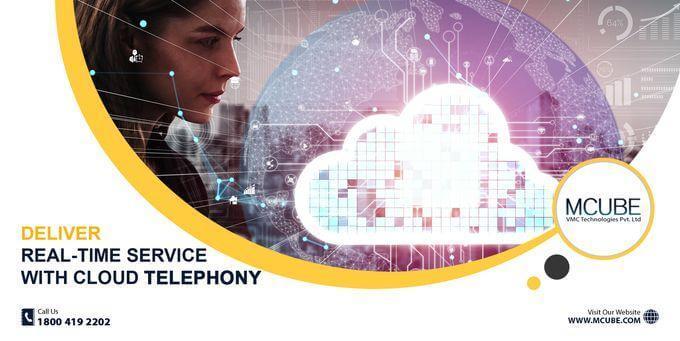Cloud telephony or internet-based voice services have overtaken the telecommunication market. Irrespective of the industry, cloud telephony can be utilised by any business venture or corporation to boost productivity, revenue, and dexterity. In contrast to the traditional telephony system, cloud telecommunication services are devoid of the requirement for physical wirings, hardware, equipment and an ideal workspace for an unruffled connection. The business only needs a working internet connection to any device or mobile where you can access the calls for a successful and quick cloud telephony installation. Similarly, as cloud telephony services can be facilitated through 3rd party hosted business establishments, there is no need for extensive investment in infrastructure, maintenance and repair of servers. Cloud telephony provides freedom from redundant, tedious and nerve-wracking connectivity exertion.
Cloud telephony comes with other beneficial features and real-time services such as click-to-call functionality, API integration to phone, call tracking, custom dashboards, simultaneous data analytics, multilevel IVRs, instant intense call recording for both inbound and outbound calls and much more. All the features provide an instantaneous and concurrent database and results. Cloud telephony operates with real-time communication attributes. All users can exchange data and information immediately with just a little dormancy in transmission. In other words, the entire connectivity remains life, and all the users handling the database can access a direct path between the source and the destination.
Here are some of the amazing features of cloud telephony that operate in real-time:
1. Click to Call Functionality :–
The click-to-call functionality is the most simple and efficacious yet real-time attribution to cloud telephony. By creating a simple click-to-call icon or button on the website or mobile app, you can directly link the user to the representatives. The data inputted by the customer is displayed on the agent’s screen and can also be used to resolve the issue quickly.
2. API Integrations :–
One of the finest features of cloud telephony is that it represents real-time services quite exquisitely. Maintaining data on customer calls, lead data, generated tickets, etc., from various platforms can become arduous. But when an API integrates with your phone system across multiple channels, the API extracts information from the CRM platform, help desk and other tools. It presents the information in front of the agent as a pop-up. This ensures real-time data transfer without the loss of any data or information.
3. Live Call Tracking :–
Cloud telephony solution providers like MCUBE offer features like real-time call tracking, which facilitates crucial information about the caller like phone number, location, etc. This attribution incredibly helps in tracing how the caller has reached the representative. It can be through IVR, direct calls, advertisements, digital marketing campaigns, etc.
4. Custom Dashboards :–
The dashboards are particularly helpful in analysing data, monitoring caller performances and concurrently observing metrics. It’s easier to visualise and create statistics that can be understood and help in decision-making. Instant results in the dashboards help show unadulterated and precise data that helps make decisions without bias.
5. Multilevel IVRs :–
This amenity acknowledges the requirements of the caller or customer in a contemporary way so that while the customer undergoes several stages to reach the agent, the data entered by the customer is transmitted to the available agent at the same time when the customer is also transferred. This allows a smooth customer transition and real-time access to data for the agent.


